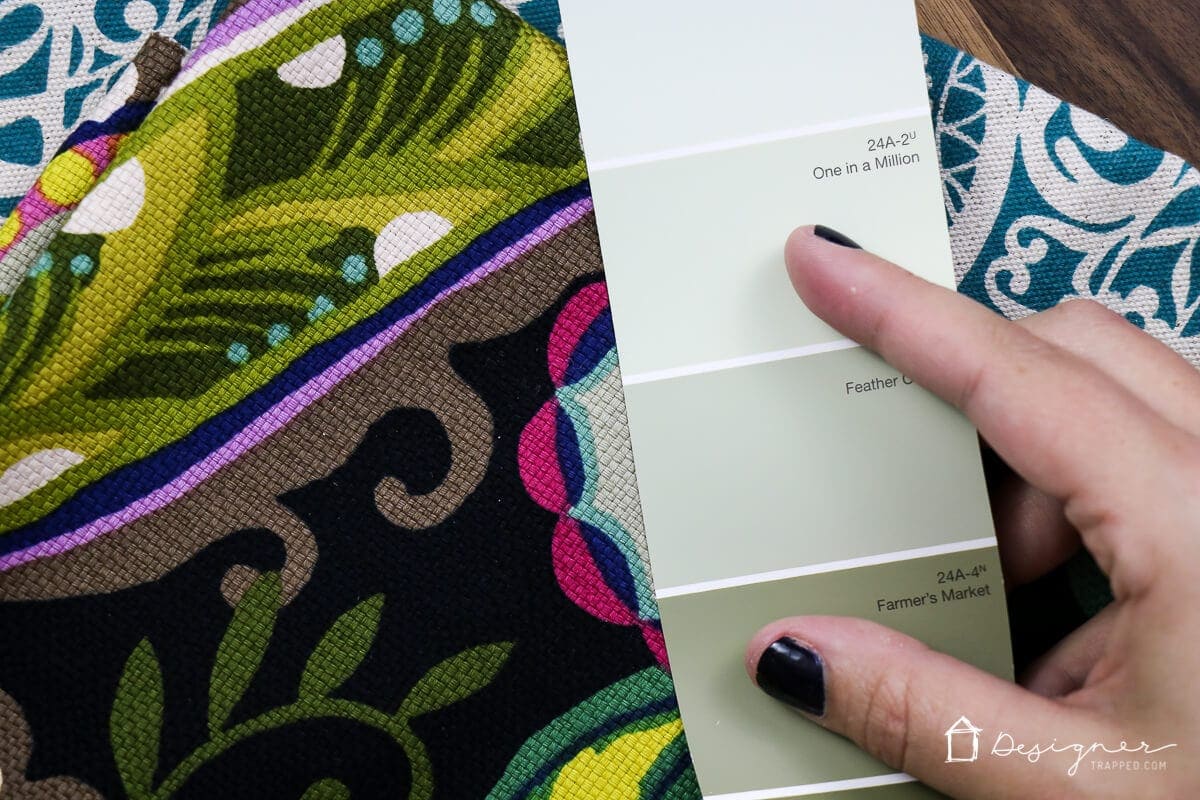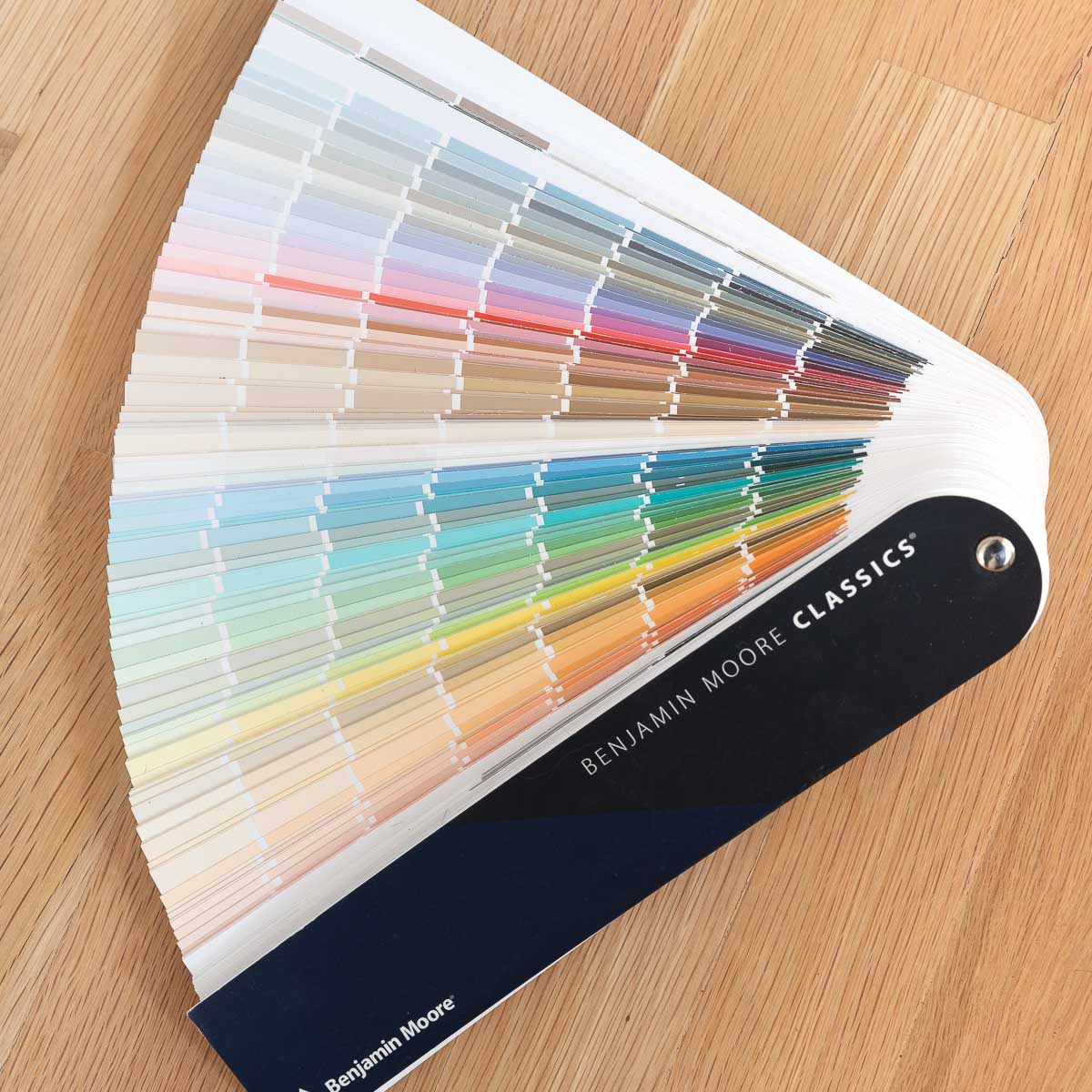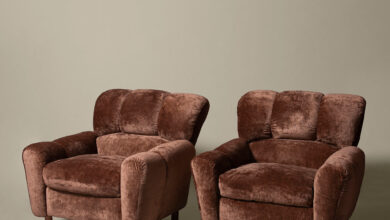
How to choose paint colors is a crucial decision in any home improvement project. It’s more than just picking a pretty shade; the right color can transform a space, impacting mood, and even the perceived size of a room. This guide dives deep into the process, exploring everything from understanding your space to considering color trends and practical considerations, ensuring your walls are not just beautiful, but also functional and harmonious with your lifestyle.
From assessing natural light and architectural features to understanding color psychology and current trends, we’ll equip you with the knowledge to make confident and informed decisions. This detailed guide will walk you through the process step-by-step, from initial planning to the final application.
Understanding Your Space: How To Choose Paint Colors
Choosing the right paint color is more than just aesthetics; it’s about creating a space that feels harmonious and functional. Understanding the nuances of your space, from its size and shape to the amount of natural light, is crucial in achieving this. A well-considered color palette can make a room feel larger, cozier, or more vibrant, all while enhancing the overall ambiance.A carefully selected paint color can transform a space.
It can highlight architectural details, make a room feel more spacious, or create a mood. Understanding your space is the first step in making these choices effectively.
Room Size and Shape
Room size and shape directly impact the perception of color. A small room can feel cramped with dark colors, while a large room might benefit from a bolder hue. A long and narrow room might be visually widened with lighter colors on the narrower walls. Experiment with different shades and tones to see how they affect the overall feel of the space.
Consider using lighter, reflective colors on the longer walls to visually create a sense of greater width. Conversely, if you have a square room, the color palette can be more flexible, as the shape doesn’t pose the same visual challenges.
Natural Light Assessment
Natural light dramatically influences how colors appear in a space. Direct sunlight can wash out cool colors, while north-facing rooms often receive diffused light, making colors appear more muted. South-facing rooms, bathed in ample sunlight, can handle a wider range of colors. Assess the amount and direction of natural light throughout the day. Observe how the light changes the color’s appearance at different times of the day.
Consider using a light meter to measure the light levels in the room, and take note of how the light changes over the day.
Architectural Features
Existing architectural features, such as fireplaces, built-ins, and crown molding, play a significant role in the color choices. The color of these features should complement the overall scheme, not clash with it. Consider the materials used in the existing features. A fireplace made of stone might look stunning with a warm, earthy tone, while a modern built-in might be enhanced by a crisp, clean color.
For example, a dark wood built-in can be beautifully contrasted with a light-colored wall to highlight the architectural detail. Plan your color palette to highlight these features effectively.
Room Type and Ideal Color Palettes
Different room types have different ideal color palettes. The chosen colors should evoke the desired mood and functionality for the room.
| Room Type | Ideal Color Palette | Considerations |
|---|---|---|
| Living Room | Neutral colors with pops of accent colors; warm tones for coziness, cool tones for a contemporary feel. | Consider the furniture and décor style to ensure a cohesive look. |
| Bedroom | Calming, restful colors; soft pastels, muted tones, or warm neutrals. | Prioritize a color palette that promotes relaxation and sleep. |
| Kitchen | Energetic, inviting colors; warm tones for a cozy feel, cool tones for a contemporary look. | Consider the size and layout of the kitchen when choosing a color. |
| Bathroom | Bright, clean colors; soft whites, light blues, or greens. | Focus on creating a spa-like atmosphere. |
Color Psychology and Mood
Choosing the right paint colors isn’t just about aesthetics; it’s about influencing the atmosphere and emotions within a space. Understanding the psychological impact of colors can transform a room from functional to truly inviting. Colors evoke powerful responses, shaping how we feel and behave in a space. This section explores the nuanced relationship between color, mood, and spatial perception.Color psychology delves into the subconscious associations we have with different hues.
These associations, often rooted in cultural norms and personal experiences, play a significant role in our emotional reactions to color. A well-chosen paint color can elevate a space’s ambiance, creating a calming sanctuary or a vibrant hub for activity.
Psychological Effects of Colors
Colors have a profound impact on our emotions and behaviors. Warm colors, like reds, oranges, and yellows, tend to be stimulating and energizing, while cool colors, such as blues, greens, and purples, often evoke feelings of calmness and tranquility. The intensity of a color also affects its impact; a muted shade of red might feel cozy, while a vibrant red can feel aggressive.
Color and Perceived Space
The relationship between color and perceived space is crucial in interior design. Warm colors, with their energetic and stimulating nature, can make a room feel smaller. Conversely, cool colors, with their calming and expansive qualities, can visually enlarge a space. This is a significant consideration when working with smaller rooms or areas where you want to create an illusion of more space.
Color Family Comparisons
The following table illustrates the general psychological effects of different color families:
| Color Family | General Effect | Potential Impact on Space |
|---|---|---|
| Warm Colors (Reds, Oranges, Yellows) | Stimulating, energetic, inviting, sometimes aggressive | Can make a room feel smaller |
| Cool Colors (Blues, Greens, Purples) | Calming, relaxing, tranquil, sometimes aloof | Can make a room feel larger |
| Neutral Colors (Grays, Whites, Browns) | Versatile, adaptable, grounding, can be calming or stimulating depending on the shade | Can be used to create either a sense of spaciousness or intimacy, depending on the specific shade and application |
Colors Associated with Specific Moods, How to choose paint colors
Different colors are strongly associated with specific moods. This association is often cultural and learned, but these associations are powerful nonetheless. Here’s a brief list of color-mood connections:
- Red: Excitement, passion, energy. Think of a vibrant red kitchen, perfect for a family who loves to cook and gather.
- Orange: Enthusiasm, creativity, warmth. A warm orange living room might inspire creative pursuits or a sense of playful fun.
- Yellow: Happiness, optimism, cheerfulness. A bright yellow bedroom could uplift the mood of the person in it, fostering a sense of joy.
- Green: Calmness, growth, nature. A soothing green bedroom could promote relaxation and a connection with nature.
- Blue: Peace, tranquility, calmness. A tranquil blue bathroom could evoke a sense of serenity and peace.
- Purple: Luxury, royalty, creativity. A purple dining room could set a regal tone for formal gatherings or inspire creative conversations.
- Black: Sophistication, mystery, power. A sophisticated black bedroom could create a sense of elegance and mystery.
- White: Purity, cleanliness, simplicity. A bright white kitchen could create a sense of cleanliness and space.
Considering Intended Use of a Space
The intended use of a space significantly influences paint color choices. A playroom, for example, might benefit from vibrant colors to stimulate creativity and energy, while a bedroom should prioritize calming hues for relaxation and rest. A workspace, on the other hand, could use colors that promote focus and productivity. The specific shade within each color family is equally important to consider.
A muted, warm yellow can be calming, while a bright, bold yellow might be overwhelming in a space intended for rest.
Color Trends and Inspiration
Choosing paint colors is a journey of self-expression and design discovery. Understanding current trends can significantly enhance your project, ensuring your chosen colors align with aesthetic preferences and the overall ambiance you envision. This section delves into the fascinating world of paint color trends, providing inspiration and practical guidance to navigate this creative process.Beyond personal preference, color trends offer valuable insights into the evolving tastes and styles of the design world.
These shifts often reflect broader cultural influences, technological advancements, and even economic conditions. By examining popular palettes and design styles, you can identify colors that resonate with your vision while remaining contemporary and stylish.
Current Paint Color Trends
Current color trends lean towards a blend of calming neutrals, invigorating pops of color, and nature-inspired hues. Earthy tones like terracotta, ochre, and sage green are gaining popularity, creating a sense of warmth and grounding. Bold and vibrant colors, such as emerald green, deep blues, and sunny yellows, are also prominent, injecting energy and personality into spaces. These bolder hues often pair beautifully with the aforementioned neutral backdrop, creating striking contrasts.
The influence of nature continues with muted blues, reminiscent of tranquil skies and deep ocean waters, which offer a calming aesthetic.
Popular Color Palettes
Design publications and online resources frequently feature color palettes that reflect emerging trends. These palettes often incorporate a harmonious mix of warm and cool tones, creating a balanced and inviting atmosphere. A popular example is the use of soft grays and creams, accented by warm terracotta or burnt orange accents. Another emerging trend involves using various shades of blue, ranging from periwinkle to navy, to create a serene and sophisticated ambiance.
Design Styles and Color Choices
Different design styles typically favor specific color palettes. Minimalist designs, for instance, often favor neutral tones like white, gray, and beige, creating a clean and uncluttered aesthetic. Bohemian designs, on the other hand, embrace a wider range of colors, incorporating vibrant hues, earthy tones, and patterns to express a sense of freedom and creativity. Modern farmhouse styles often use a mix of warm neutrals, such as creamy whites and light browns, paired with accents of blue or green, to create a cozy and welcoming atmosphere.
These color choices are deeply intertwined with the overall aesthetic and atmosphere each style intends to evoke.
Incorporating Personal Preferences
While trends offer inspiration, it’s crucial to incorporate personal preferences into your color choices. Consider the mood you wish to evoke in a space and the emotions you want to experience when you are in the room. If a trend feels too bold or overwhelming, don’t hesitate to soften or modify it to align with your personal taste.
Finding a balance between current trends and personal preferences is key to creating a space that feels both stylish and uniquely yours. Consider experimenting with different shades and intensities of a trend color to create a truly personalized look.
Evolution of Popular Color Palettes (Past 5 Years)
| Year | Dominant Color Palettes | Characteristics |
|---|---|---|
| 2019 | Muted Pastels, Earthy Tones | Subtle and calming palettes, featuring soft pinks, lavenders, and greens, alongside warm browns and creams. |
| 2020 | Calm Neutrals, Greige | Emphasis on neutral tones, including grays, whites, and beiges, often with a subtle warmth or coolness. |
| 2021 | Bold Accents, Deep Blues, Emerald Green | Vibrant and bold hues, such as emerald green, navy, and deep blues, often used as accents or focal points within a space. |
| 2022 | Nature-Inspired Hues, Sage Green | Colors reminiscent of nature, including sage green, terracotta, and ochre, creating a calming and grounded atmosphere. |
| 2023 | Soft Grays, Warm Neutrals, Pops of Color | Neutral tones remain popular, but with a focus on warm tones and accents of vibrant colors to add personality and life. |
This table illustrates a clear shift from muted pastels and neutral tones to a greater embrace of bold and nature-inspired hues. This evolution reflects the cyclical nature of trends and the continued desire for spaces that evoke a strong emotional connection.
Choosing the Right Shade
Picking the perfect paint color is a journey, not a destination. It involves understanding your space, your style, and the emotions you want to evoke. Once you’ve established a color palette, the next crucial step is selecting the right shade within that palette. This involves more than just the base color; undertones, lighting, and the final finish all play a significant role in the final look.Understanding the nuances of a color, beyond its basic hue, is vital for achieving a harmonious and aesthetically pleasing result.
Different paint finishes, lighting conditions, and the application of the color in your actual space will dramatically alter the perceived shade. This section will delve into the intricacies of selecting the perfect shade, considering the various factors that influence its appearance.
Considering Undertones
Undertones are subtle colors hidden beneath the main hue of a paint color. These undertones can significantly impact the final look and feel of a room. For instance, a paint described as “blue-gray” might appear quite different depending on whether its undertone leans more towards blue or gray. A blue-toned gray can feel cool and calming, while a gray-toned gray can feel more neutral and versatile.
Recognizing these subtle differences is key to choosing a color that complements your space and desired mood.
Viewing Swatches Under Different Lighting
Lighting dramatically alters the appearance of paint colors. Natural light, artificial light, and even the time of day can all significantly impact how a color looks. To accurately assess a paint color, it’s essential to view swatches under various lighting conditions. Compare swatches in direct sunlight, under incandescent bulbs, and fluorescent lights. You should also consider the direction of light in your space and how it might interact with the paint color.
A paint that looks beautiful under fluorescent lights might appear dull or washed out under natural sunlight.
Comparing Paint Finishes
Different paint finishes will affect the way the color appears. The finish, or sheen, alters the reflection of light and can change the perceived intensity and depth of a shade.
| Paint Finish | Visual Impact | Examples of Rooms |
|---|---|---|
| Matte | Soft, subtle, and slightly muted. Creates a calm and sophisticated feel. | Bedrooms, living rooms, and areas where a relaxed atmosphere is desired. |
| Satin | A moderate sheen that reflects light evenly, offering a smooth finish. Good balance of durability and visual appeal. | Bathrooms, kitchens, and hallways, where a balance of visual appeal and practicality is desired. |
| Gloss | High sheen that reflects light brightly, making colors appear more vibrant. | Kitchens, bathrooms, and areas that require durability and a brighter look, like entryways. |
Importance of Sample Application
Viewing paint swatches on a wall in your actual space is crucial for determining the final look. Paint colors can appear drastically different on a small swatch than they do on a larger surface area, especially when considering the undertones. This is why sample application is essential. Paint a small section of the wall in the chosen shade.
Then, view it under different lighting conditions throughout the day. This will give you a far more accurate representation of how the color will look in your space.
Creating a Balanced Color Palette
A balanced color palette uses various shades and tones to create depth and visual interest. This involves understanding how different shades of the same color interact. A single color can be used in different shades, and those shades can be combined with other colors to form a cohesive palette. For example, a room painted in a soft blue-gray might have accents of a deeper navy blue, a lighter sky blue, or a warm cream color to add depth and variety.
This interplay of tones and shades will create a balanced and engaging color scheme.
Practical Considerations

Choosing the perfect paint color is a journey that goes beyond aesthetics. It’s about considering the practical aspects of your project to ensure a smooth, successful, and long-lasting outcome. From the surrounding environment to the preparation of surfaces, several key factors influence your final choice. Let’s delve into these crucial practical considerations.Understanding the broader context of your surroundings is crucial.
Neighborhood aesthetics, architectural styles, and existing color palettes play a vital role in achieving a harmonious and well-integrated result. A bold, modern color choice might clash with a more traditional neighborhood, while a muted palette might feel out of place in a vibrant, contemporary area. Thoughtful consideration of your surroundings ensures your paint choice enhances the overall appeal of your property.
Considering the Surrounding Environment
Neighborhood aesthetics significantly influence the impact of your paint choice. A cohesive color scheme within a neighborhood can enhance the overall appeal of the area. Conversely, a paint color that stands out too much can create a jarring effect. Researching the prevailing color styles in your neighborhood can provide valuable insight and help you select a paint color that complements the surrounding environment.
Consider how the paint color interacts with the architecture of neighboring houses and the overall feel of the neighborhood.
Choosing a Paint Brand and Type
Selecting the right paint brand and type is vital for achieving optimal results and durability. Various brands offer different formulations, each with its own set of advantages and disadvantages. Factors to consider include the paint’s coverage, drying time, resistance to moisture and fading, and the specific needs of the surface being painted. A high-quality paint will offer better coverage and longevity, which can save money and time in the long run.
Consider factors like durability, ease of application, and the specific needs of your project.
- Durability: A durable paint can withstand wear and tear, protecting your walls from chipping and fading. Look for paints specifically designed for high-traffic areas or exterior use.
- Coverage: Paint coverage varies between brands and types. If you have a large surface area to cover, choose a paint with a high coverage rate to minimize the number of coats required.
- Drying Time: Faster drying times can save you time and effort during the painting process. Consider how quickly the paint needs to dry before the next coat is applied or the room can be used.
- Moisture Resistance: If the painted surface is exposed to moisture, select a paint specifically designed to resist water damage and mold growth. Interior paints typically do not need this feature.
- Cost: The price of paint varies considerably between brands and types. While a higher price tag may suggest higher quality, balance cost with the specific needs of your project.
Calculating Paint Needed
Accurately calculating the amount of paint needed for your project is essential to avoid running out mid-project or overspending on excess paint. Incorrect calculations can lead to additional trips to the store, wasted time, and frustration. Using a simple formula to determine the total square footage of the surface area you need to paint is crucial.
Total Paint Required = Surface Area (in square feet) / Coverage per gallon (in square feet per gallon)
A common mistake is overlooking trim and other areas requiring paint. Ensure that your calculation includes all the surfaces you intend to paint, including ceilings and walls.
Preparing Surfaces Before Painting
Proper surface preparation is crucial for achieving a smooth, professional finish. A poorly prepared surface can lead to uneven application, bubbling, or peeling paint. Different surfaces require different preparation methods.
- Cleaning: Remove any dust, dirt, grease, or debris from the surface. This ensures the paint adheres properly.
- Repairing Damage: Fix any holes, cracks, or imperfections in the wall. Use spackle or drywall compound to fill these areas, ensuring a smooth surface before painting.
- Sanding: Sand the surface to create a smooth, even texture. This allows the paint to adhere better and create a more professional finish.
- Priming: Priming a surface helps to improve paint adhesion and create a more uniform color. This is especially important for surfaces that have been previously painted in a different color or with a different type of paint.
Choosing and Preparing a Room for Painting
A step-by-step approach to preparing a room for painting will save you time and ensure a more successful outcome. The process should be carefully planned to avoid unnecessary complications.
- Gather Supplies: Collect all necessary materials, including paint, brushes, rollers, drop cloths, painter’s tape, and any other necessary tools.
- Prepare the Room: Clear the room of furniture and other items. Cover any items you can’t move with drop cloths. Protect floors and baseboards with painter’s tape to prevent paint spills and splatters.
- Surface Preparation: Thoroughly clean and repair the walls. Sand the walls to smooth out any imperfections. Prime the walls if needed.
- Paint Application: Apply the paint in even coats, following the manufacturer’s instructions. Allow adequate drying time between coats.
- Clean Up: Clean all tools and equipment. Remove any excess paint from the walls and surrounding areas.
Visual Examples
Choosing the right paint colors is a crucial step in transforming a space. Visual examples can dramatically illustrate how different color palettes and paint finishes affect the overall aesthetic and atmosphere. Seeing how colors work in real-world scenarios provides invaluable insight, helping you visualize the final outcome before committing to a specific shade.
Vibrant Living Room
A vibrant living room with a warm color palette can create a welcoming and energetic atmosphere. Imagine a space painted in a rich terracotta or ochre hue on the walls. This warm tone is further enhanced by complementary accent colors, such as deep jewel tones in furniture and decorative accessories. Natural light streaming through large windows would beautifully highlight the warm colors, creating a cozy and inviting ambiance.
The light would bounce off the walls, accentuating the warmth and vibrancy of the room. Adding pops of gold or brass in decorative accents would further amplify the warm glow.
Modern Bedroom
A modern bedroom with a cool color palette can evoke a sense of tranquility and sophistication. Consider using a light, cool gray or a soft mint green for the walls. A matte finish would create a smooth, modern look, while a satin finish would offer a slightly more reflective surface, enhancing the feeling of spaciousness and calm. Furniture in sleek, dark wood tones or a cool-toned metal would complement the overall aesthetic.
Strategically placed mirrors would amplify the light, reflecting the cool colors and further contributing to the room’s sense of spaciousness and elegance.
Bold Kitchen
A kitchen with a bold color palette can create a dramatic and engaging atmosphere. A deep navy blue or a vibrant emerald green on the walls would instantly elevate the space. Accent colors like sunny yellow or burnt orange in the cabinetry or backsplash would create a dynamic contrast, adding visual interest and life to the room. The contrast between the bold color and the accent colors can energize the space and encourage interaction within the kitchen.
The right use of lighting would enhance the bold colors.
Calming Bathroom
A bathroom with a calming color palette can create a serene and relaxing retreat. Light blues, soft greens, or gentle lavenders on the walls would create a tranquil atmosphere. A semi-gloss or satin finish would reflect light effectively, creating a bright and airy feeling. The soft lighting, combined with the calming colors, would enhance the relaxation and tranquility.
Natural elements like plants or wooden accents can further complement the soothing color scheme.
Neutral-Toned Hallway
A neutral-toned hallway can be a blank canvas for expressing different moods. Using a neutral base color like off-white or a soft beige can serve as a backdrop for a variety of moods. You could paint different sections of the hallway with varying shades of gray, beige, or even muted blues to create distinct areas or zones. Using different paint finishes, like a matte finish for a relaxed vibe or a satin finish for a more polished look, can also influence the mood in each section.
Incorporating artwork or wall decor in different styles can enhance these various moods. This flexibility in color and mood creation allows for versatility and personalization.
Outcome Summary

Choosing the perfect paint colors is a journey of discovery, combining practical knowledge with personal preferences. By considering your space, desired mood, and current trends, you can create a space that reflects your unique style and enhances your overall well-being. This guide provides a roadmap for successful paint selection, enabling you to transform your home into a vibrant and inviting environment.





